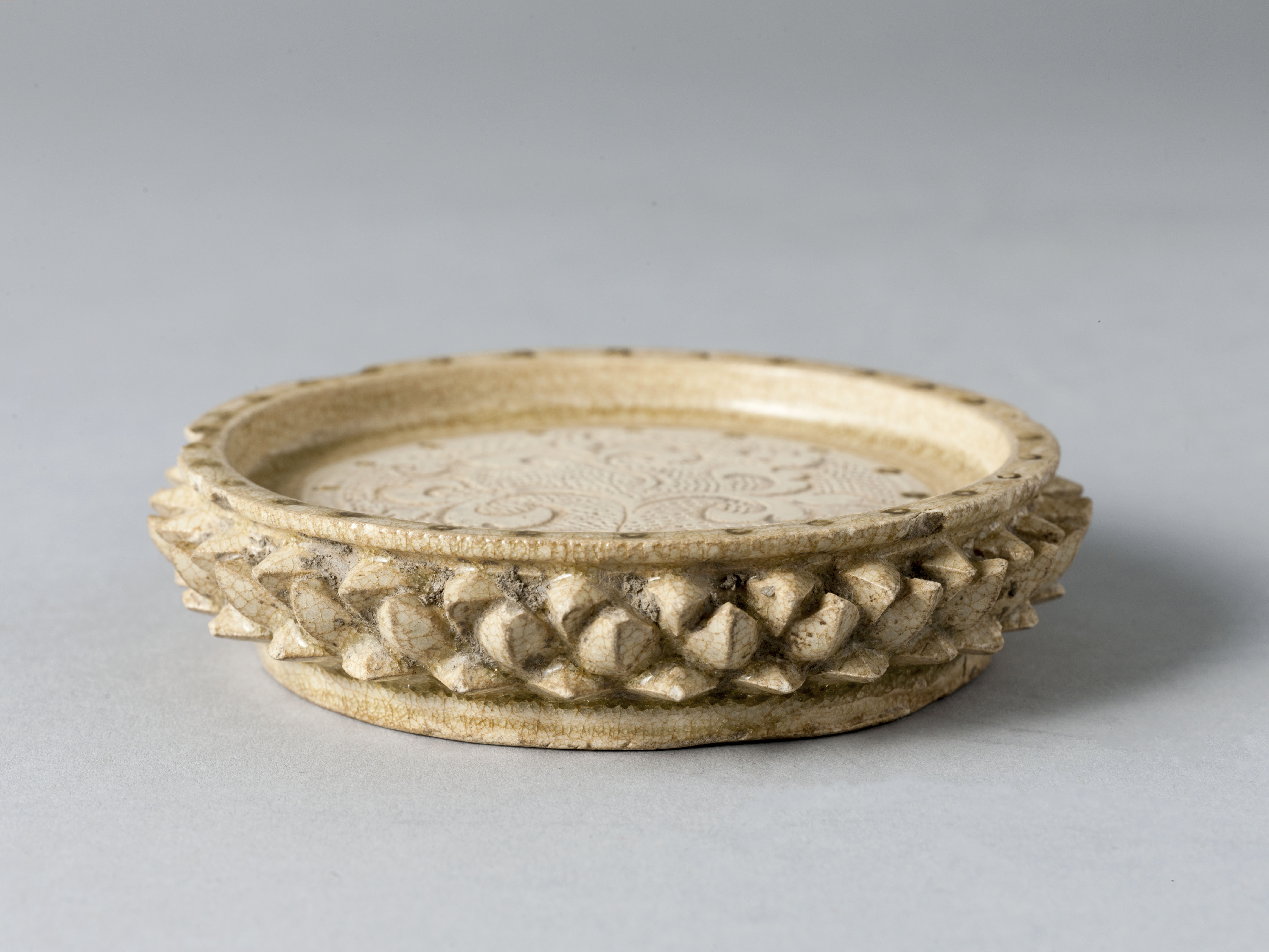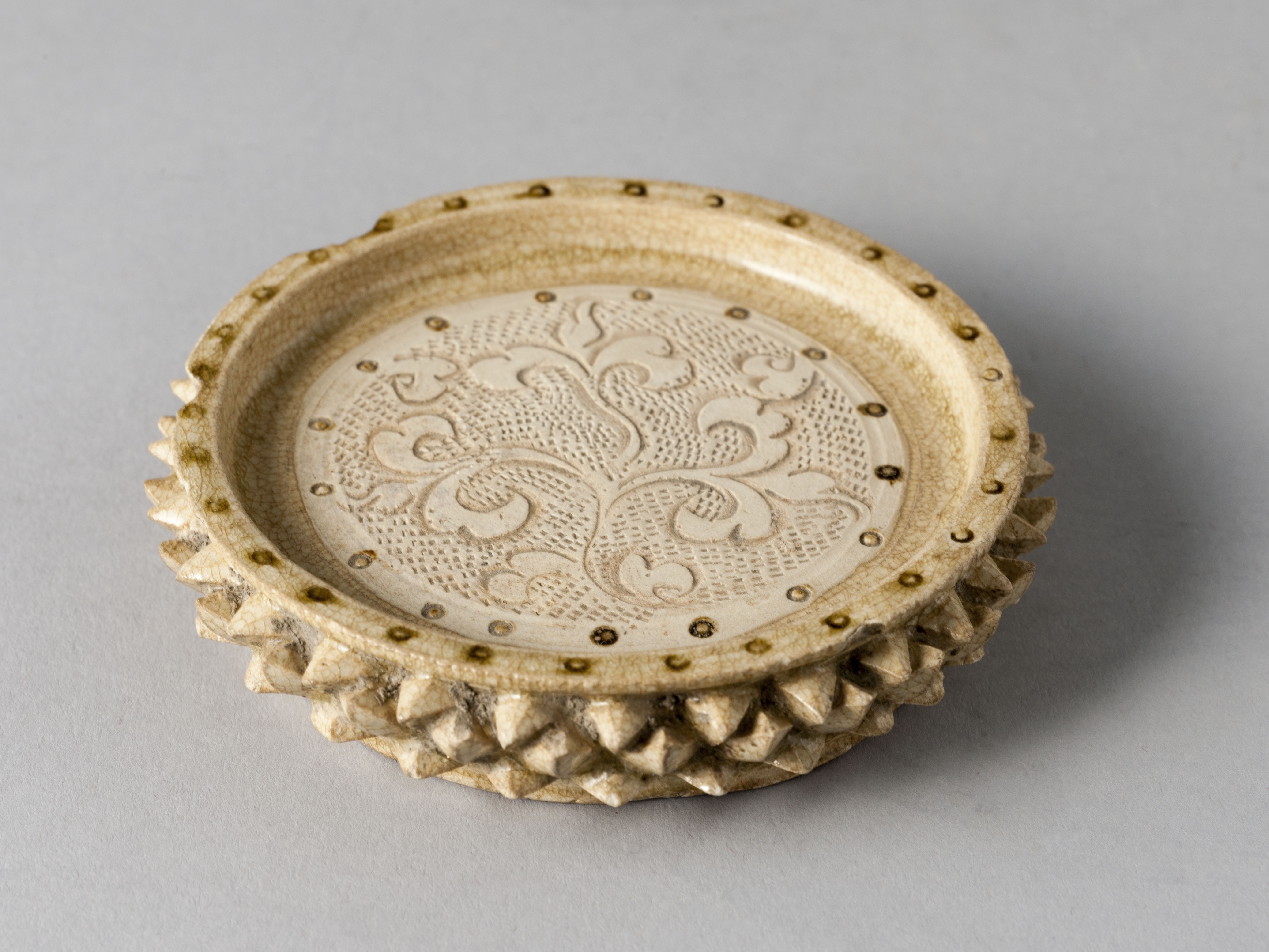
Coupelle de présentation
Présentoir
Fouille 6 B, site de Đông Sơn, Thanh Hóa,
Don fouilles : Mission Janse Indochine (1934-1935)
M.C. 8225
This display dish with a circular central plate is decorated on the outside with a triple row of lotus petals in high relief reminiscent of the sculptural precious metalwork of the Champa, an Indianised kingdom in southern Vietnam, contemporary and rival to the Đại Việt. The inner surface of the small circular foot is unglazed, as is inside of the dish, whose matt finish contrasts with the greenish reflections of its brilliant glaze. An elegant incised branch motif stands out against a pricked ground, this time reminiscent of refined Chinese precious metalwork. The rim and two ribbons encircling the central motif are highlighted with iron oxide, demonstrating the inventiveness of Vietnamese potters looking to create contrasts similar to those found in silverwork.
This type of precious recipient may have been used in a Buddhist context for presenting offerings to a god, or to a deceased person, as is the case with this dish. It was excavated by Olov Janse in an ancient burial site of the village of Đông Sơn, and was placed as a funerary offering against the coffin buried in the ground. From the Lý period (1009 – 1225) onwards, there was no distinction between funerary and everyday ceramics, as there was in the Giao Chỉ period. A single type of ceramic for ritual use could be placed in the tomb with the deceased person as an offering.

